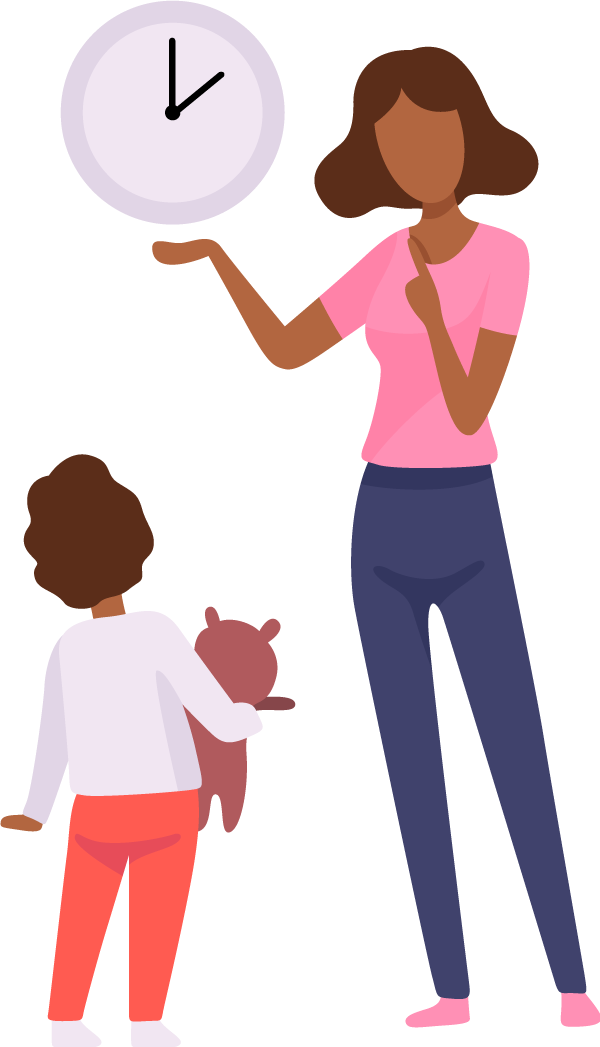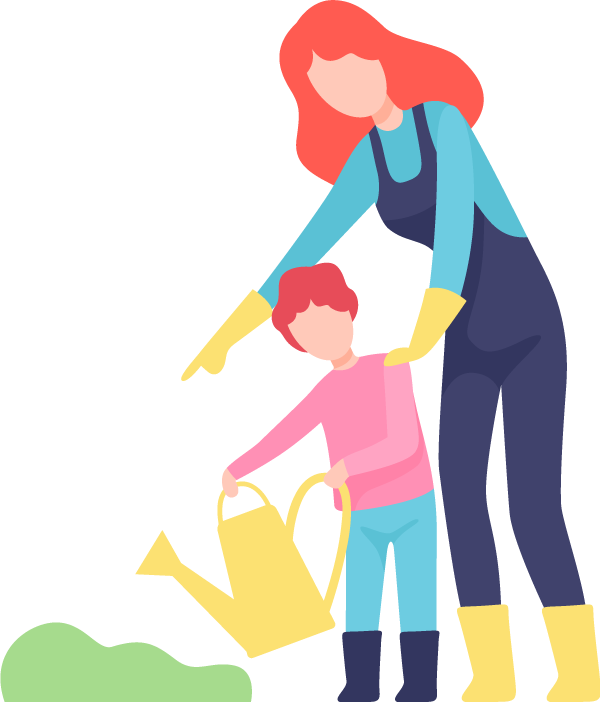
Developing Language Recommendation 2:
Linking Sounds to Letters Recommendation 3:
Blending Letters, Recognizing and Writing Words Recommendation 4:
Reading for Understanding
Developing Language Recommendation 2:
Linking Sounds to Letters Recommendation 3:
Blending Letters, Recognizing and Writing Words Recommendation 4:
Reading for Understanding
Help your child blend letters to read words and recognize common word parts and words, and encourage them to write words.
Blending to Read Words

Blending is the ability to put letter sounds together to read a word. To read a word, children must know the sounds the letters represent in the word and be able to blend those sounds to come up with the correct word. For example, after children know the letter sounds /f/ for f, /ĭ/ for i, and /sh/ for sh, they learn to blend those sounds together to read the whole word. When they see the word fish, they are able to say, "/f/ /ĭ/ /sh/, fish." We call this, blending because you are putting sounds together to read a word.
- Mom explains that a digraph is two (or more) letters that make one sound (sh says /sh/).
- Mom explains that a consonant blend is two or more consonants next to each other that keep their individual sounds (You can hear the /s/ and the /l/ in the word sleep).
- When her son has difficulty with the /ch/ (as in chick), Mom models it for him and has him practice it several times.
- Dad reviews the r-controlled vowels on the activity sheet before they begin the activity.
- Dad provides positive feedback to his son: "Great job, buddy!"
- Dad uses words in a sentence to model oral language and help his son understand the word.
Sound-Spelling Patterns

For the following activities, your child will blend letters, analyze word parts, and write and recognize words. Use the documents below as needed before or while engaging in the activities.
Sound-spelling patterns consist of letters that are often combined to make a specific sound. Common sound-spelling patterns can include consonant patterns, vowel patterns, and syllable patterns. See examples below (not an exhaustive list of examples).
| Pattern Type | Pattern | Examples |
|---|---|---|
| Consonant Patterns | Consonant digraphs are two or more consonants next to each other that make one sound. |
|
| Consonant blends are two or more consonants next to each other that make their individual sounds. |
|
|
| Silent-letter combinations are two consonants next to each other where one says its sound and the other is silent. |
|
|
| Vowel Patterns | Vowel teams are two or more letters next to each other that say one vowel sound. |
|
| Vowel diphthongs two vowels next to each other that begin with one vowel sound and changes to another vowel sound within the same syllable. |
|
|
| r-controlled vowels are vowels followed by r. |
|
A syllable is a word part with a vowel in it. Usually, a word has as many syllables as it has vowels. Vowels are a, e, i, o, u. The other letters (like b, c, d, f) are consonants.
- Cat has one syllable.
- Picnic has two syllables (pic‑nic).
- Yesterday has three syllables (yes‑ter‑day).
| Syllable Pattern | Description | Examples |
|---|---|---|
| Open | A syllable ending with a vowel sound that is spelled with a single vowel letter (a, e, i, o, or u). |
|
| Closed | A syllable ending in one or more consonants and a short vowel sound spelled with one vowel. |
|
| VCe | V stands for vowel. C stands for consonant. e is the silent e at the end of a syllable or word.
A syllable pattern that ends in silent e, which makes the vowel before it a long sound (say its name). |
|
| Vowel Team | A syllable that has multiple vowels spelling the vowel. |
|
| Vowel‑r | A syllable that has at least one vowel followed by an r. The r always comes directly after the vowel (ar, er, ir, or, ur). |
|
| Consonant‑le | A final syllable that contains a consonant followed by le. The e is always silent in this syllable pattern. |
|
- Dad clearly explains the floss rule and provides examples at the beginning of the activity.
- Daughter uses her favorite color markers to complete the activity.
- After several practice opportunities, Dad asks his daughter to explain the difference between words that follow the floss rule and those that do not.
- Mom explains and shows examples of long o spelling patterns before beginning the activity.
- Mom does the first one to show her daughter how the activity is to be completed.
- As each word is spelled by the daughter, Mom uses it in a sentence to promote vocabulary and oral language.
- Siblings have fun identifying vowel diphthongs while playing bingo.
- Oldest son engages both siblings in the activity.
- Oldest son encourages siblings to use the word in a sentence to promote language development.
- Mom explains the double the consonant spelling rule and provides examples at the beginning of the activity.
- Mom reviews the double the consonant rule with each word her daughter spells.
- Mom asks her daughter to use a word in the sentence to promote language and vocabulary development.
- Dad discusses what vowel teams and syllables are to make sure his son understands before starting the activity.
- Dad is patient and encouraging ("you're doing a great job") throughout the activity.
- Dad points out and explains the "tricky" words (boatload, toenail). These words are compound words, and each include two vowel team syllables.
- Mom explains vowel-r syllable patterns before beginning the activity.
- Mom explains the meanings of unknown words (cursor) to promote vocabulary development.
Common Word Parts

Understanding common word parts like base words, prefixes, and suffixes will help children break words into smaller, meaningful word parts, which can help them read, write, and understand more challenging words.
The word help is called a base word because it can stand alone and has meaning. It is also called a base word because we can add to it to change the word. For example, we can add the ending ‑ful, for the word helpful. When we add a word part to the end of a word, it is called a suffix. We can also add a word part to the beginning of a base word. When we add a word part to the beginning of a base word, it is called a prefix. For example, the prefix un‑ can be added to helpful to make the word unhelpful.
| Word | = | Prefix | + | Base Word | + | Suffix |
|---|---|---|---|---|---|---|
| Unhelpful | = | un | + | help | + | ful |
- Mom reviews what they started before dinner to remind her son of what the activity was all about.
- Mom asks her son the meaning of the inflectional endings -es and -ed to make sure he understands the meaning of the words they review.
- Mom prompts her son by asking him to say the whole word, the base word, and the inflectional ending.
- When her daughter doesn't find I've, Mom tells her that it will have an I first to help her find the contraction.
- Mom has her daughter read the word cards and asks her what contraction makes up the words.
- Mom encourages her daughter to look on both bingo cards to find the contraction to provide more practice opportunities.
- Mom discusses the meaning of each word to promote vocabulary development.
- When her daughter can't remember the word prefix, Mom gives her a choice, "Is it a suffix or a prefix?"
- Mom and daughter enjoy painting and reading words with prefixes and suffixes.
Reading Words

Blending is the ability to put sounds together to read a word. For example, when children see the word soil, they are able to say, "/s/, /oi/, /l/, soil." There are many ways to support your child in reading words. For example, provide opportunities for your child to practice reading words in a list or on flashcards. It is also important for children to practice reading words in sentences and stories.
- When her son encountered a difficult word, Mom encouraged him to separate the word into individual sounds (still) or parts (badly) and then read the whole word.
- Mom talks about important vocabulary (tour, caught her eye) in the story.
- Mom asks her son questions about what he read to encourage language development and ensure he understood what he read.
High-Frequency Words

High-frequency words are words that appear frequently in books. Examples of high-frequency words are again, every, know, could. It is important that children learn how to read high-frequency words automatically, correctly without hesitation. The more your child reads and writes high-frequency words, the better he or she will get at reading them automatically.
There are many activities that families can do to help their children read high-frequency automatically.
- Show your child the high-frequency word because. Have your child say the word, write the word, and then say the word again.
- Use the provided high-frequency word cards as flash cards and time your child as he or she reads a stack of them. You can place words that were challenging for your child in a separate pile, so you know which words need more practice. The goal is to read more words correctly in less time each time you engage in the activity.
- Dad provides several opportunities for his daughter to read and spell each word.
- Daughter uses her favorite color markers to complete the activity.
- Dad has his daughter write a sentence using high-frequency words of her choice to provide more practice opportunities.
Challenging and Important Words

Just because a book contains challenging words, it doesn't mean that you can't read it with your child. Before reading a book with your child, skim it to see if there are any challenging and important words. For example, Tyrannosaurus rex would be considered challenging to read, but are important words in a book about dinosaurs. Words also may be challenging because the child has not learned the sound-spelling pattern contained in the word or the word contains irregular sound-spelling patterns as in the words resource or necessary. Select three such words that appear most frequently in the book. Introduce the words to your child before you read the book. Point to each word in the book and tell your child how to pronounce it and what it means. Ask your child to point to the word and say it. If there are too many challenging words, you can read the book aloud to your child rather than have him or her read it to you.
- Mom reviews the main idea of the book since they are reading the book over several days.
- Mom reviews three challenging and important words (independent, razor, treasure) and relates them to something familiar to her son before reading.
- When the challenging and important words appear as they read, Mom asks her son what they mean.
A list of informational books to read with your child. Use the provided bookmark as a reminder to talk about challenging and important words that appear often in the book.
- Emperor Penguins by Roberta Edwards
- Your Fantastic Elastic Brain by JoAnn Deak
- Fly Guy Presents: Dinosaurs by Tedd Arnold
- Pet Heroes by Nicole Corse
